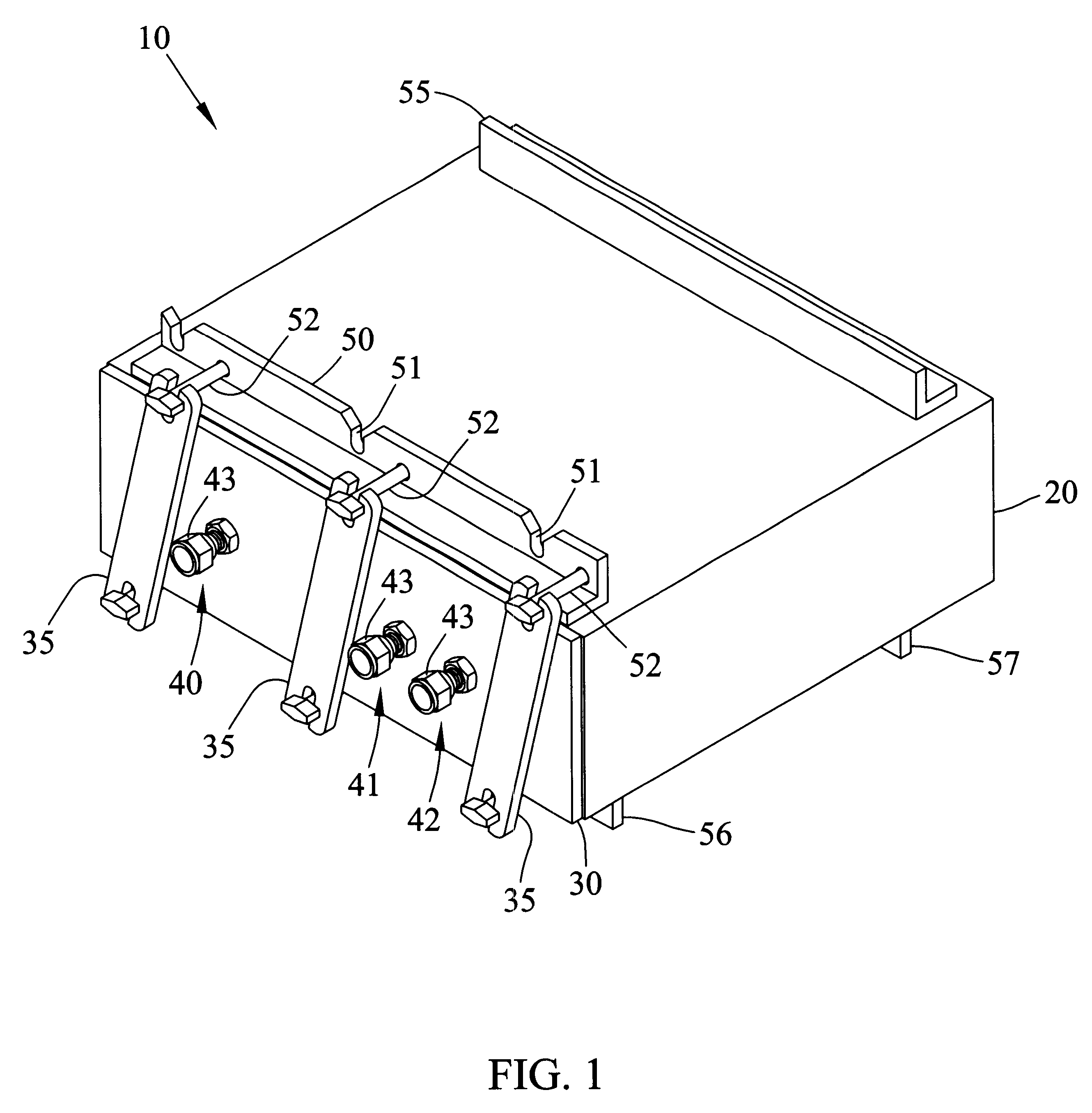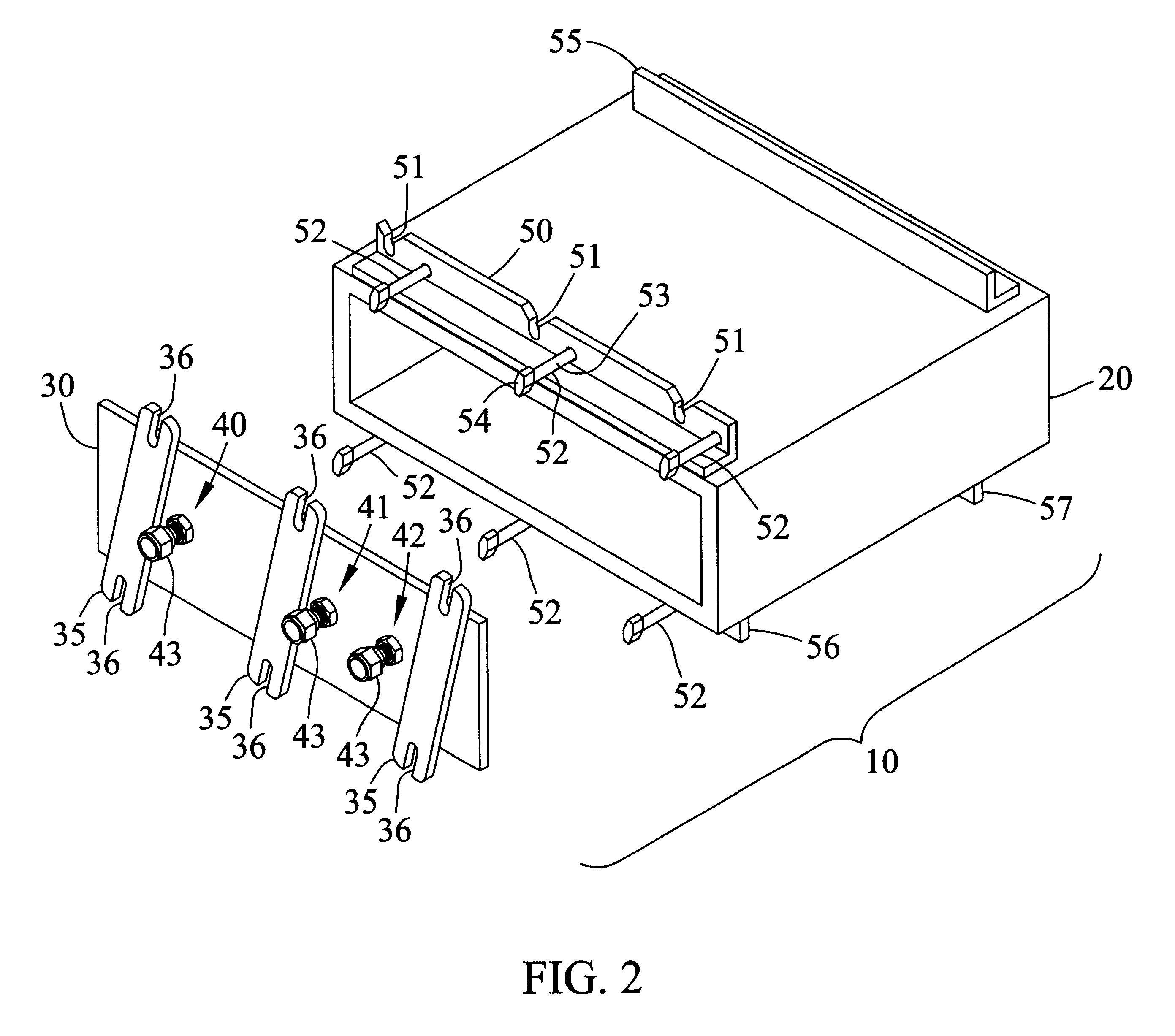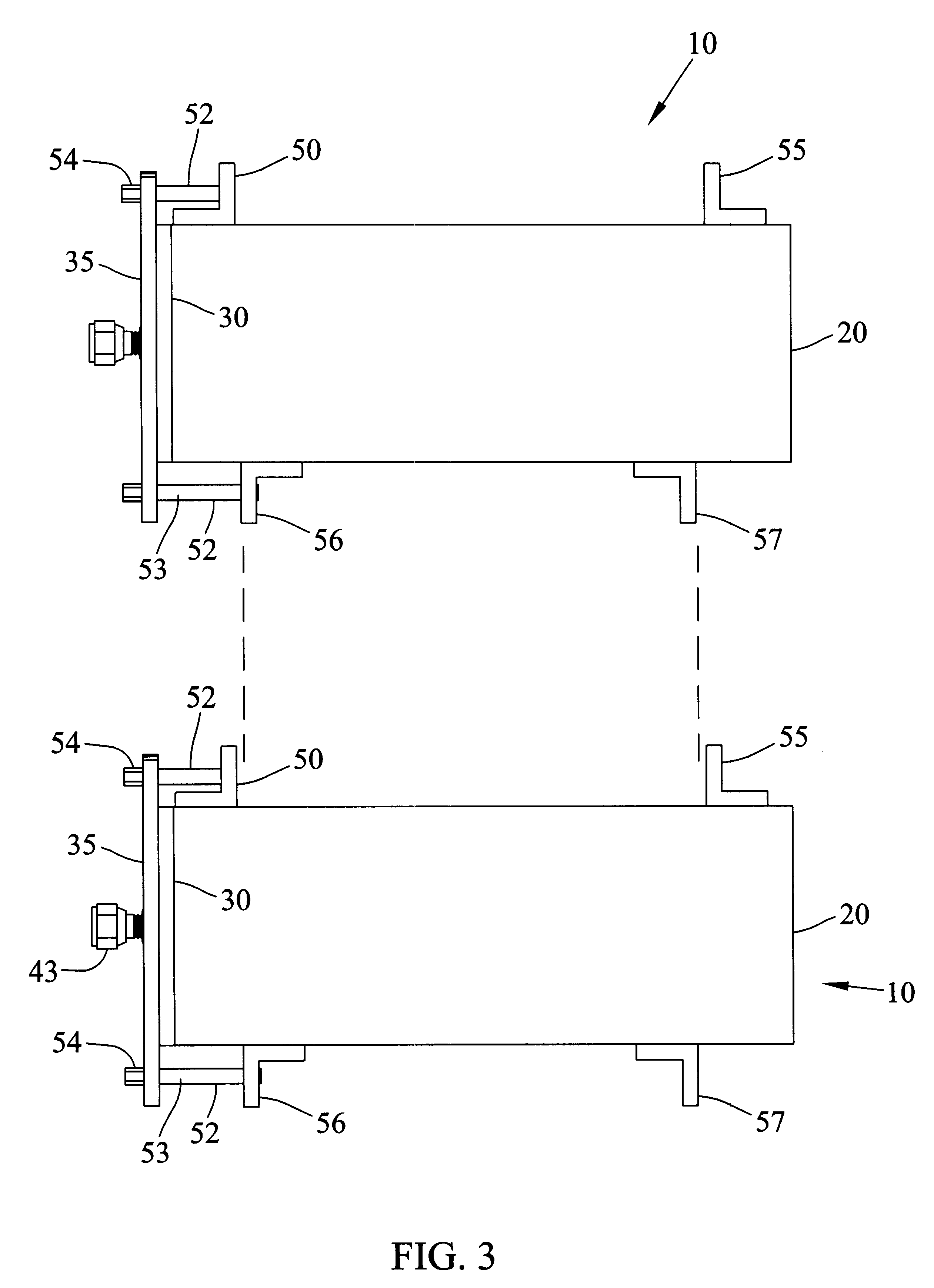Culturing cells in a chamber in a stack of chambers
a technology of cells and chambers, applied in the field of chambers, can solve the problems of the inherent properties of chemicals, the potential for personnel exposure to potentially hazardous chemicals, and the volatile nature of chemicals that exhibit good potential for industrial or military us
- Summary
- Abstract
- Description
- Claims
- Application Information
AI Technical Summary
Benefits of technology
Problems solved by technology
Method used
Image
Examples
Embodiment Construction
FIGS. 1-5 illustrate one embodiment of an exposure chamber 10 according to the present invention. As shown in these drawings the chamber 10 includes a chamber body 20 having a lid 30 which enables the chamber body 20 to be opened and closed to permit cell cultures being studied to be readily inserted into or removed from the chamber body 20. The chamber 10 also includes one or more ports 40-42 which enable substances to be introduced into or removed from the chamber body 20 when the chamber body 20 is sealed by the lid 30.
The chamber body 20 can have any shape which enables it to house a desired number and type of cell cultures. From the standpoint of ease of manufacture, a rectangular body 20 with substantially flat surfaces may be convenient, but a body 20 with curved surfaces or a combination of flat and curved surfaces may also be used. The chamber body 20 and the lid 30 may be made of any material which is compatible with the substances to which it is to be exposed. Materials w...
PUM
| Property | Measurement | Unit |
|---|---|---|
| thickness | aaaaa | aaaaa |
| relative horizontal movement | aaaaa | aaaaa |
| flexible | aaaaa | aaaaa |
Abstract
Description
Claims
Application Information
 Login to View More
Login to View More - R&D
- Intellectual Property
- Life Sciences
- Materials
- Tech Scout
- Unparalleled Data Quality
- Higher Quality Content
- 60% Fewer Hallucinations
Browse by: Latest US Patents, China's latest patents, Technical Efficacy Thesaurus, Application Domain, Technology Topic, Popular Technical Reports.
© 2025 PatSnap. All rights reserved.Legal|Privacy policy|Modern Slavery Act Transparency Statement|Sitemap|About US| Contact US: help@patsnap.com



